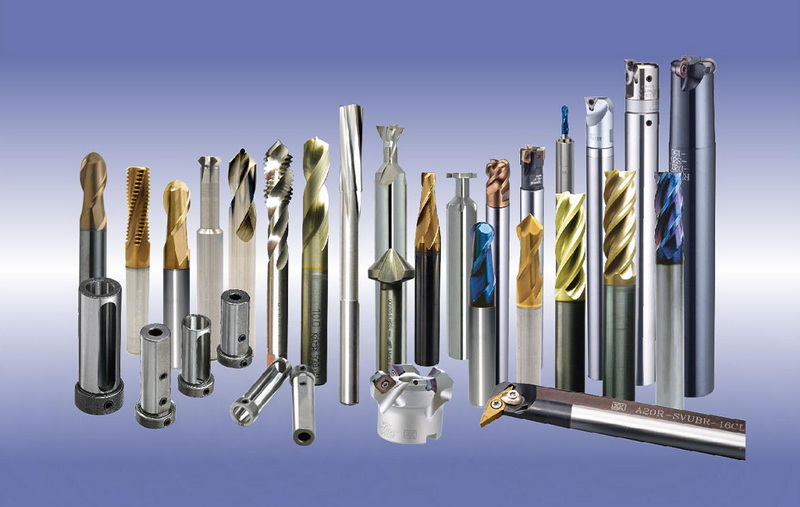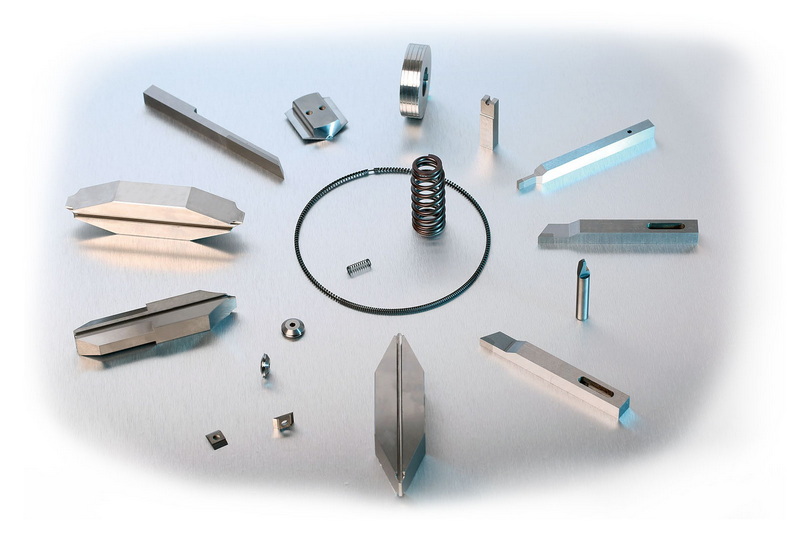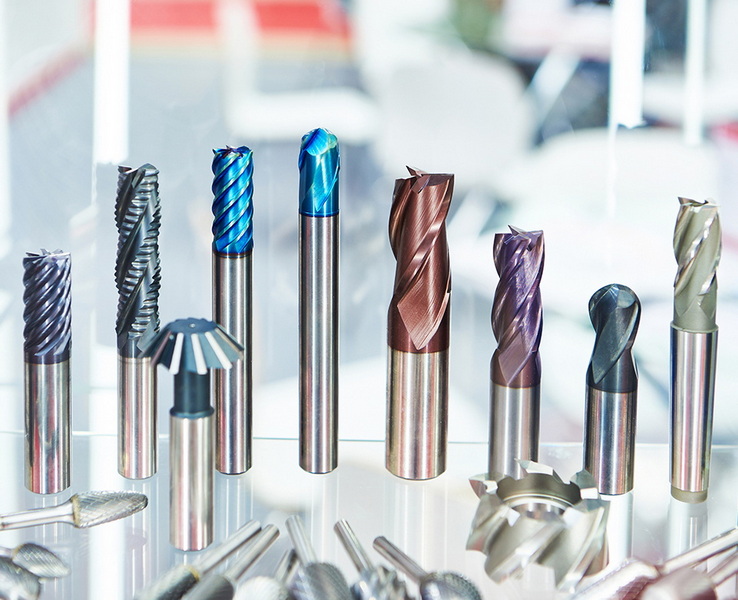Content Menu
● Introduction to Tungsten Carbide
>> Production Process of Tungsten Carbide
● Applications of Tungsten Carbide in Cutting Tools
>> Milling Operations
>> Drilling Operations
>> Turning Operations
>> Reaming Operations
● Impact of Tungsten Carbide Production on the Industry
● Future Prospects and Innovations
● Challenges and Opportunities
● Case Studies: Success Stories in Tungsten Carbide Production
● Conclusion
● Frequently Asked Questions
>> 1. What is Tungsten Carbide?
>> 2. How is Tungsten Carbide Produced?
>> 3. What are the Main Applications of Tungsten Carbide Cutting Tools?
>> 4. How Does Cryogenic Treatment Affect Tungsten Carbide Tools?
>> 5. What are the Future Prospects for Tungsten Carbide Production?
● Citations:
Tungsten carbide production has been a cornerstone in the development of cutting tools, transforming the industry with its exceptional hardness, wear resistance, and thermal stability. This article delves into the impact of tungsten carbide on the cutting tool industry, exploring its applications, production processes, and future prospects.

Introduction to Tungsten Carbide
Tungsten carbide is a compound of tungsten and carbon, known for its hardness, which is second only to diamond. It is widely used in the manufacture of cutting tools due to its ability to withstand high temperatures and maintain sharpness over time. The production of tungsten carbide involves blending tungsten carbide powder with metallic binders like cobalt, followed by sintering at high temperatures to form the desired shape and structure.
Production Process of Tungsten Carbide
The production process of tungsten carbide involves several key steps:
1. Material Preparation: Tungsten carbide powder is mixed with a binder, typically cobalt, to enhance its toughness while maintaining hardness.
- Mixing of Tungsten Carbide Powder with Cobalt
- Pressing and Sintering
- Grinding and Shaping
2. Pressing and Sintering: The mixture is pressed into the desired shape and then sintered in a vacuum or hydrogen reduction furnace at temperatures around 1400°C to achieve the required hardness and structure.
3. Grinding and Shaping: The sintered carbide is then ground and shaped using diamond tools to achieve precise dimensions and edge geometry.
4. Coating: Some tools may undergo additional coating processes to enhance wear resistance and tool life.
Applications of Tungsten Carbide in Cutting Tools
Tungsten carbide is extensively used in various cutting tool applications due to its superior properties:
Milling Operations
- Tungsten Carbide End Mills: These are the most common tools used in milling operations. They efficiently remove material and provide a smooth finish on materials like aluminum, steel, and titanium.
Drilling Operations
- Carbide Drills: These are ideal for high-speed drilling applications, capable of withstanding high temperatures and speeds, making them suitable for materials like steel, aluminum, and cast iron.
Turning Operations
- Carbide Inserts: Used in turning operations, these inserts can handle high temperatures and speeds, making them ideal for high-volume production environments.
Reaming Operations
- Carbide Reamers: These tools are used to enlarge and finish existing holes, providing a smooth and accurate finish, essential for applications requiring tight tolerances.
Impact of Tungsten Carbide Production on the Industry
The production of tungsten carbide has revolutionized the cutting tool industry in several ways:
1. Enhanced Tool Life: Tungsten carbide tools offer significantly longer lifespans compared to traditional high-speed steel tools, reducing downtime and increasing productivity.
2. Improved Machining Efficiency: The hardness and wear resistance of tungsten carbide enable faster machining speeds and better surface finishes, enhancing overall efficiency.
3. Versatility in Applications: Tungsten carbide tools can be used across a wide range of materials, from metals like steel and titanium to plastics and composites.
4. Cost-Effectiveness: Despite higher initial costs, the extended tool life and improved performance of tungsten carbide tools lead to cost savings over time.
5. Environmental Impact: While tungsten carbide production involves energy-intensive processes, advancements in sustainable manufacturing are being explored to reduce environmental impact.

Future Prospects and Innovations
The future of tungsten carbide production in the cutting tool industry looks promising, with ongoing research into improving tool life and performance:
1. Cryogenic Treatment: This process involves cooling tungsten carbide tools to extremely low temperatures to reduce residual stress and enhance tool life.
2. Advanced Coatings: New coating technologies are being developed to further increase wear resistance and tool performance.
3. Sustainable Production Methods: Efforts are underway to make tungsten carbide production more environmentally friendly and sustainable.
4. Nanotechnology Integration: Researchers are exploring the integration of nanomaterials to enhance the mechanical properties of tungsten carbide tools.
5. Digital Manufacturing: The adoption of digital manufacturing techniques, such as 3D printing, is expected to improve the precision and customization of tungsten carbide tools.
Challenges and Opportunities
Despite the advancements, there are challenges and opportunities in the tungsten carbide industry:
1. Raw Material Availability: The availability of tungsten can be volatile due to geopolitical factors, affecting production costs and supply chains.
2. Technological Advancements: Continuous innovation in tool design and manufacturing processes presents opportunities for growth and improved efficiency.
3. Market Demand: The increasing demand for high-performance cutting tools in industries like aerospace and automotive drives the need for further advancements in tungsten carbide production.
4. Regulatory Environment: Environmental regulations and sustainability standards are pushing manufacturers to adopt greener production methods.
5. Global Competition: The global market for tungsten carbide tools is highly competitive, with manufacturers continually seeking ways to differentiate their products through quality and innovation.
Case Studies: Success Stories in Tungsten Carbide Production
Several companies have successfully leveraged tungsten carbide production to enhance their operations:
1. Aerospace Industry: Tungsten carbide tools have been instrumental in the aerospace sector for machining high-strength alloys, improving production efficiency and reducing costs.
2. Automotive Sector: The use of tungsten carbide tools in the automotive industry has led to faster production cycles and improved part quality, contributing to increased competitiveness.
3. Medical Devices: Tungsten carbide is used in the manufacture of precision medical instruments due to its biocompatibility and durability.
Conclusion
Tungsten carbide production has been instrumental in transforming the cutting tool industry by providing tools with unparalleled hardness, wear resistance, and thermal stability. As technology continues to evolve, we can expect even more innovative applications and improvements in tungsten carbide production.

Frequently Asked Questions
1. What is Tungsten Carbide?
Tungsten carbide is a compound of tungsten and carbon, known for its exceptional hardness and wear resistance. It is widely used in cutting tools due to its ability to maintain sharpness and withstand high temperatures.
2. How is Tungsten Carbide Produced?
Tungsten carbide is produced by mixing tungsten carbide powder with a metallic binder, typically cobalt, followed by pressing and sintering at high temperatures. The sintered carbide is then ground and shaped to achieve precise dimensions.
3. What are the Main Applications of Tungsten Carbide Cutting Tools?
Tungsten carbide cutting tools are used in milling, drilling, turning, and reaming operations. They are ideal for machining a variety of materials, including metals, plastics, and composites.
4. How Does Cryogenic Treatment Affect Tungsten Carbide Tools?
Cryogenic treatment reduces residual stress in tungsten carbide tools, leading to a denser microstructure and improved tool life. This process enhances the wear resistance and stability of the tools.
5. What are the Future Prospects for Tungsten Carbide Production?
Future prospects include advancements in coating technologies, sustainable production methods, and further research into enhancing tool life and performance through treatments like cryogenic processing.
Citations:
[1] https://www.7leaders.com/blog/tungsten-carbide
[2] https://epictool.ca/carbide-cutting-tools-the-most-common-uses-for-carbide/
[3] https://ndltd.ncl.edu.tw/cgi-bin/gs32/gsweb.cgi/login?o=dnclcdr&s=id%3D%22100CSU00657035%22.&searchmode=basic
[4] https://www.wj-tool.com/material
[5] https://www.huaxincarbide.com/news/tungsten-carbide-blade-essential-cutting-tool-in-industrial-applications/
[6] https://nfuaca.nfu.edu.tw/index.php/zh/2015-07-10-06-09-43/item/download/195_8615530bec39ceb39b4fb977dafa879f
[7] https://www.tool-tool.com/news/201202/cutting-tool-manufacturing-process/index.html
[8] https://www.sollex.se/en/blog/post/about-cemented-tungsten-carbide-applications-part-1
[9] https://ir.lib.cyut.edu.tw/bitstream/310901800/24807/1/101CYUT5747002-001.pdf
[10] https://www.hit-tw.com/newsdetails.aspx?nid=298
















